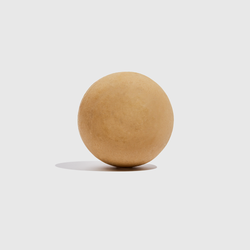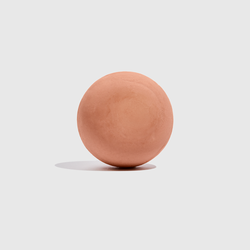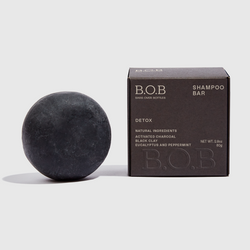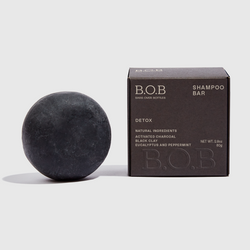What Is Hair Transition? Discover How To Do It, the Schedule, and More!
Index
- What is hair transition?
- How long does the hair transition process take?
- What’s the best way to speed up the process?
- The “Big Chop”
- How to transition
- Capillary Schedule
- Can I straighten my hair during the transition?
- How to define curls
- Get to know my Curl Defining Bundle
Life is all about phases, and there’s nothing better than changing our look to keep up with these different phases, right? It’s a way of telling the world about our new moment and the transformations we’re going through.
One change that many women have made in their lives, and in their appearance, concerns the very concepts of beauty they once held. Old aesthetic standards that dictated the rules are being questioned, and this leads to a movement of personal acceptance that’s becoming increasingly stronger.
One of the manifestations of this acceptance is hair transition: a phase in which we abandon any chemical or physical procedures that alter the natural texture of our hair, where we let our hair be as it naturally is.
If you’re also in the phase of wanting to return to your natural look, it’s time you find out everything about it: What is hair transition, how to do it, and what are the best products for it? Let’s begin.
What is hair transition?
The name may sound a tad complicated, but the meaning is quite simple actually: Hair transition is that period in which your hair doesn’t undergo any chemical treatments so that it has the chance to grow in its natural texture.
In theory, you just need to stop doing chemical treatments to your hair and let it grow naturally, with curls or waves, without chemically straightening it or blow drying it straight.
Of course, hair transition can mess with your head literally (your hair transforms) and metaphorically, since it also changes the way you see, accept and value yourself.
Rest assured that at the end of your hair transition, more than just your hair will have changed completely.

How long does the hair transition process take?
Everyone’s hair grows at its own pace, and since we’re talking about acceptance, these moments require understanding and patience.
How fast your hair grows is genetically determined and can be influenced by several factors: age, hair type, history of chemical treatments, and even nutritional diet.
It’s estimated that women’s hair grows at an average rate of 1.2 centimeters per month, but the characteristics of each curl pattern can influence the perception of this growth. As we’ve seen in my blog, there are four different hair types, and type 2 hair (wavy) growth can be more visibly noticeable than type 3 (curly) and type 4 (coily) hair, for example. But this doesn’t mean that curly and coily hair doesn’t grow at the same rate – it just seems like they take longer to grow.
Another important point: You define when your hair transition begins and ends. As we’ll see later, the end of this process can be done gradually, with small regular cuts that slowly eliminate the straightened ends, or in a more extreme way, with a radical cut that leaves behind all traces of your straightened hair phase.
What’s the best way to speed up the process?
We know that hair transition has to do with taking care of your hair in a more natural way. So, don’t even think about using some miracle technique to accelerate hair growth, especially if it involves harmful chemicals or physical treatments being applied to your hair; no tight braids or ponytails to “pull hair outwards”, for example. The effect can be the opposite of the one you desired and can lead to hair breakage.
I recommend using natural ways to stimulate hair growth, such as eating food rich in proteins and vitamins, and paying attention to your scalp’s health. Your hair will consistently grow and, sooner than later, you’ll see that there is more naturally textured hair than straightened hair. With a few frequent haircuts and a bit of patience, you’ll regain your original texture!
For people that are in a hurry, there are more drastic solutions: Yes, I’m talking about chopping all the straightened hair off and basically starting from scratch. This technique has a name: the Big Chop.

The “Big Chop”
One approach to hair transition is to get a Big Chop.
Basically, the Big Chop means cutting off all the chemically straightened hair in one go. It’s a well-known (and faster) method to eliminate the straightened part, and many women go for this solution to speed up their hair transition.
The Big Chop is a more daring alternative, and it also changes your look completely since you no longer have the straightened hair anymore and your hair becomes much shorter. That’s why it’s important to remember that going for the Big Chop requires careful thinking, and it’s far from being a mandatory solution for anyone going through their hair transition.
How to transition
In fact, there’s no big secret on how to transition: It happens naturally and it’s your hair that’ll change the way you look.
Of course, there are some tips on what to do to not get in the way or make your hair’s job harder, such as:
- Bye, chemical straightening: Just stop applying any product or treatment that changes the natural texture of your hair, such as thermal reconditioning, keratin treatment, relaxers, and henna (a cosmetic used to straighten and dye hair).
- Go easy on the flat irons and hair dryers: Used in excess, they can impair hair growth.
- Brush gently: Two such different textures in the same hair strand can be a challenge when detangling and brushing hair, so be gentle. Choosing the right comb/brush and using a cream can help and prevent hair breakage.
- Take special measures: Try to maintain a balanced diet with the right nutrients that make your hair healthy, and have a hair care routine that includes moisturizing, nutrition, and rebuilding during the transition phase: the famous Capillary Schedule.

Capillary Schedule
That’s right! There is a recommended capillary schedule for those of you going through the transition, and it aims to prepare your hair as much as possible to face this new phase.
What happens is that, many times, the hair going through the transition may suffer from lack of nutrition and weakness, thus breaking easily and slowing down the natural growth rate. That’s why the capillary schedule includes a weekly calendar of specific hair care that aims to strengthen it and is made up of three basic actions: moisturizing, nutrition, and rebuilding.
The role of moisturizing is to replenish hair water and nutrients. Nutrition aims to create a lipid barrier in the hair fiber, keeping it moisturized, soft, and shiny. Lastly, the rebuilding phase restores keratin lost over time due to chemical treatments and strengthens the strands, and prevents hair from becoming weak.
You can choose which products and procedures you prefer to use for each type of action, and follow a proposed capillary schedule with the following monthly routine:
- 1st week: 1 moisturizing, 1 nutrition, and 1 rebuilding
- 2nd week: 1 nutrition, 1 moisturizing, and 1 nutrition
- 3rd week: 1 moisturizing, 1 nutrition, and 1 rebuilding
- 4th week: 1 moisturizing, 1 nutrition, and 1 moisturizing
Can I straighten my hair during the transition?
There’s no such thing as a yes or no answer when it comes to hair transitions. Since it’s an extremely personal process, each person should set their own limits to not get frustrated along the way.
For example, the use of flat irons and hair dryers during the hair transition phase isn’t recommended, precisely because using them can damage or weaken hair that’s already weak and seeking strengthening.
However, many women can feel more confident using these resources to minimize the difference in textures throughout their hair, and if it can help them stay steadfast in their purpose, there’s no reason to stop them from doing so.
In any case, the tip we gave you a few paragraphs back still works: Use a flat iron or hair dryer only when necessary, and always very carefully, without exaggerating. Avoid using the flat iron more than three times on the same strand and, if possible, use a hair protector on your hair.

How to define curls
Is the natural curl pattern of your hair starting to appear, and can you even recognize a curl or two? Congratulations, it’s a sign that your hair is leaving the chemical treatments in the past and is getting back to how it really is! And the good thing is that you can use some specific techniques and products that’ll help form and define your curls.
Some women choose to get some finishing and texturing procedures done to help disguise the different hair textures, that way all their hair has the same texture as their natural hair. Some of the procedures and accessories used in this process are flexi rods, bantu knots, finger coiling (holding the strands with hairpins), and a technique where you split hair into “ribbons” that are two centimeters thick and apply hand movements along the hair, just like when you curl ribbons to put on a gift.
There are also people who prefer to activate their curls and waves by using products for this purpose, such as curl activators and creams with gel or gelatin. But these solutions can end up “weighing” too much on the hair if used incorrectly, since they stick to the hair’s structure and can accumulate on the scalp, thus leaving residues.
More natural alternatives, such as shampoos and conditioners that cleanse and take care of your hair, and at the same time stimulate the natural curl pattern of your hair, may be a good choice for people who are in the transition phase and want a little help with their hair transition schedule. That’s the case of my Curl Defining Bundle.

Get to know my Curl Defining Bundle
Acting together, my Moisturizing Shampoo and Curl Definer & Leave-In Conditioner are a natural and effective options to accompany you during your hair transition, and also after this very unique self-knowledge journey.
Check it out: Both products are natural, vegan, made without resorting to animal cruelty, and 100% plastic-free thanks to their innovative bar design, which eliminates the use of bottles and helps reduce plastic waste generation and disposal.
The incredible natural ingredients in my Curl Defining Bundle are also worth mentioning and are ideal for your capillary schedule. Have you ever imagined how amazing it'd be to take care of your hair's new phase using Vegetal Keratin, Buriti Oil, Pracaxi Oil, Murumuru Butter, Acacia Senegal (Shikakai), Cedar Essential Oil, Mango Butter, and May Chang? You and your curls will love it!
The Moisturizing Shampoo starts your hair care routine by cleansing the scalp and boosting hair moisture. Your hair becomes healthy and nourished from the root, thanks to the combination of Buriti and Pracaxi oils. Murumuru Butter is the ingredient that complements the moisturizing and helps reduce frizz and split ends.
The Curl Definer & Leave-In Conditioner is a “two-in-one” formula that can be used during and after showering, as a conditioner and leave-in. The Vegetal Keratin and Mango Butter, which are super moisturizing, revitalize dry hair and regulate volume, thus defining curls and getting rid of frizz. Fused with the Pracaxi and Buriti Oil, they offer deep moisture to the curls and make them shine more.
With this dynamic duo, your hair transition will be healthier and more sustainable! After all, if you’re going to make a change and take on your natural hair, why not also make your bath time a more aware and natural moment too, right?
If you’re in the hair transition phase, or if you’ve tried my shampoos and conditioner bars, leave your comments below and tell me how your experience has been!



































